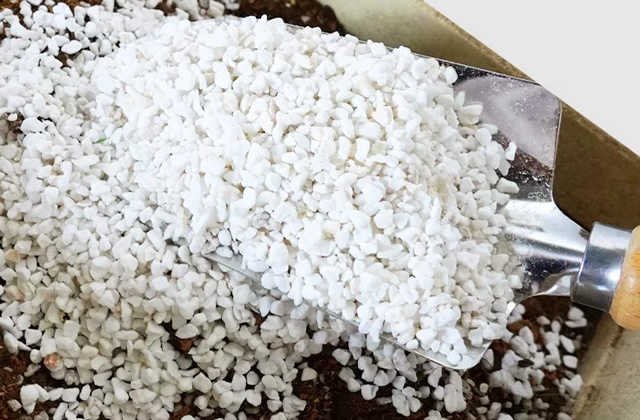What are the correct ways to use perlite to raise flowers?
1. What are the benefits of sustaining flowers
For many flowers, perlite is no stranger.But do you know what kind of effect is for flowers to grow flowers?
1. Improve the knot of the soil and improve the breathability
The interior of the perlite is full of air holes, just like a small "ventilation".After mixing these stomators with the soil, it can effectively improve the drainage and breathability of the soil.Imagine that the roots of plants are freely breathing in these small holes, and nutrients can be better absorbed.This is very important for the healthy growth of flowers!
2. Water absorption ability, water preservation and Fertilizer
The water absorption ability of perlite is also bars!Its internal hole structure can absorb a lot of water, and can even reach 2-3 times its weight.In this way, even in a dry environment, plants can get stable water supply.Moreover, perlite can also absorb and store effective ingredients in Fertilizer to ensure that the nutrients required by plants in the process of growth are continuously supplemented.
3. Absorb pesticides and play a dilution role
In addition to improving the soil and water preservation and Fertilizer, there is a special function of perlite -absorb pesticides.Its porous structure can effectively absorb pesticides and play a role in dilution and slow release.This is especially important in family Gardening, because the use of pesticides may cause pollution to the environment.The adsorption effect of perlite can reduce the risk of pollution and protect the environment of the environment and the health of flowers.

Second, the correct way to use perlite seed flowers
Sleeve is a common cultivation medium that is widely used in flower planting due to its good breathability and drainage.Here are some key steps to use perlite flowers to ensure the healthy growth of flowers:
1. Prepare suction
Choose pure perlite to avoid using varieties containing impurities.Pour the perlite into the Flower pot to ensure that the thickness is appropriate.
2. Add Fertilizer
Add an appropriate amount of Fertilizer to the perlite to provide the nutrition required for flowers.Pay attention to control the amount of Fertilizers to avoid excessive causes of burning.
3. Watering
Use the appropriate amount of water to pour flowers to ensure that the perlite is kept moist.Avoid excessive watering to avoid rotting roots.
4. Light
Provide appropriate light conditions according to the needs of different flowers.Make sure flowers accept sufficient sunlight or appropriate scattered light to meet the needs of photosynthesis.
5. ventilation
Maintain good ventilation conditions and help the healthy growth of flowers.Wind open windows regularly to avoid flowers in a closed environment.
6. Prevention and treatment of diseases and insect pests
Regularly check whether the flowers have signs of pests and diseases, and take prevention measures in a timely manner.Proper pesticides can be sprayed to prevent and treat diseases and insect pests.
Follow the above steps. The use of perlite flowers can provide a good growth environment to promote the growth of flowers.
Third, precautions for suction flowers
1. Plant selection
Plane is an acidic matrix. When nourishing flowers with perlite, it is best to raise flowers that like acidic soil, which can promote these flowers to grow better. If the substrate for flowers that like alkaline soil, it may reduce the flowers of flowers.Observation value may even cause withering.
The perlite matrix is relatively frivolous. Mixing it into other soil can also improve the breathable drainability of the soil. Therefore, it is very suitable for drought -tolerant and waterlogging plants, and it is not suitable for plants that grow in humid environment.
2. Soil mix and match
Square is a non -toxic and tasteless matrix, but the acidity of perlite is relatively high. Usually use perlite to pay attention to mix and match the perlite with other soils.Growing in the rock.
3. It should not be excessive
Plane is an acidic lava erupted from volcanic, which is helpful for many flowers, but it should not be excessive when mixed with other soils. It can be mixed with perlite at a ratio of 4: 1.
4. Wind -proof Running away
In fact, perlite is easy to be powdered. Usually when we use the perlite to make flowers, each time we water the flowers, the surface of the perlite will surface.The rock can be run away by the wind.
5. Anti -proof in the body
Although there is no toxin in perlite, after the pink powder is powder, it is easy to be blown into the air by the wind. If people absorb them into their bodies, they will cause some harm to their health. Therefore, Be careful to avoid absorbing it into the body.
